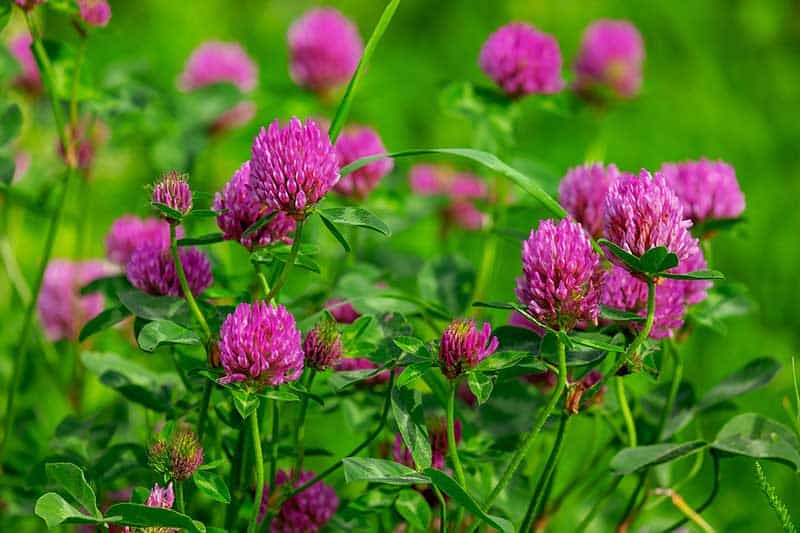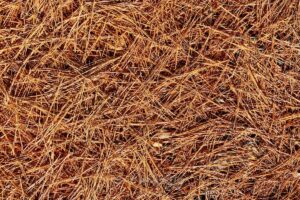This page may contain affiliate links. If you click and buy, we might get a small commission at no cost to you.
Weeds in Massachusetts is one thing you can count on showing up on your lush, green lawns. They can destroy your landscaping and decrease your curb appeal or property value when left unchecked. To prevent these weeds from killing your grass and taking away much-needed nutrients from surrounding plants, you’ll want to know what to look out for and do routine lawn care. Be aware of common culprits with this list of 15 weeds in Massachusetts.
15 weeds in Massachusetts
While some of these weeds have pretty-looking flowers, their widespread growth can ruin your lawn and plants! Be on the lookout for these 15 common weeds and remove them before they take over.
1. Crabgrass
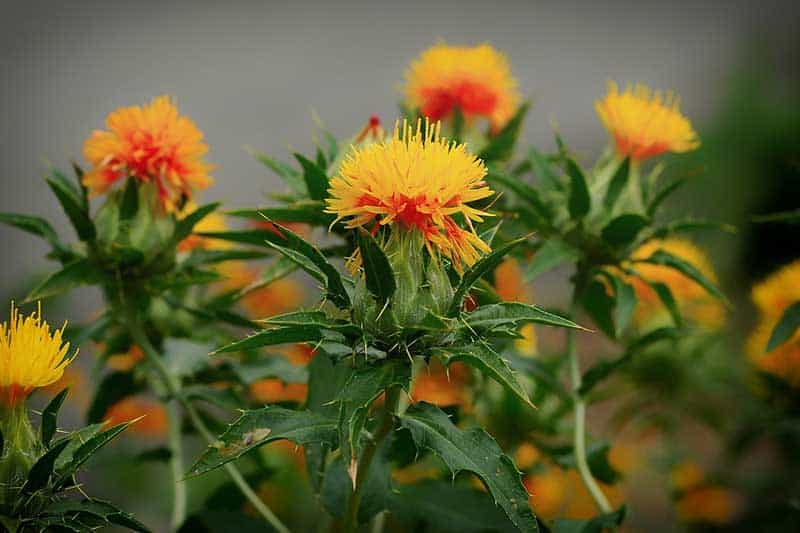
Crabgrass is easily recognizable in your yard since it has yellowish-green blades that stick out crudely against lush, green lawns. Although an annual weed, it produces a lot of seeds that it leaves behind and spreads, making it keep growing unless treated with a pre-emergent weed treatment. In fact, it can produce up to 150,000 seeds in one growing season!
2. Dandelions

A very common broadleaf weed in Massachusetts, dandelion can thrive almost anywhere, even in low nitrogen soils. It can be distinguished by its whitish seed pods and yellow flowers. Blowing the seed pods may be a fun pastime, but that’s how the seeds spread. You’ll need to put in some effort to pull them up by the roots since they can burrow up to 10 inches into the ground.
3. Clover

Clover is a perennial broadleaf weed that comes back every year and commonly grows in landscape beds and lawns. You can recognize them from the clover-shaped leaves and little white flowers when they bloom. They compete well even against other weeds and can thrive in nitrogen-depleted soil. Keeping your lawn well-fed can reduce their chances of continuously growing back.
4. Wild violet

Wild violet, also known as common blue violet, has heart-shaped leaves with blue or dark purple flowers. Although the small flowers look cute, this weed can grow in thick mats that choke out other grasses and plants. It’s a perennial weed that’s hard to eliminate unless you apply the right products correctly.
5. Broadleaf plantain
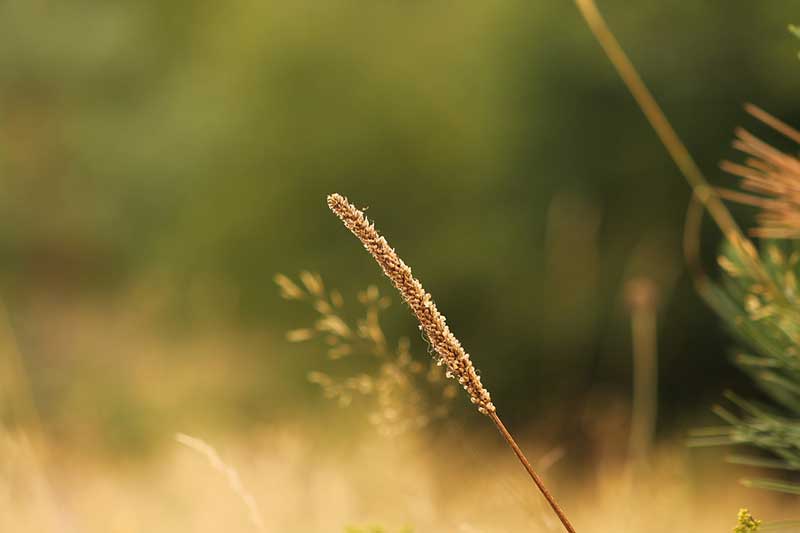
Not to be confused with plantain fruits, broadleaf plantain weeds have stem-like flowers and leaves growing in a circle. It loves moisture and thrives in compact soil, so make sure your lawn has proper drainage. It may require aeration to get rid of them. You’ll also want to tear them out from the roots since they can easily spring back and the seeds can remain dormant in the soil for up to 20 years.
6. Carpetweed
As its name suggests, carpetweed spreads rapidly to form a thick mat-like groundcover. They have green stems that branch out and remain close to the ground, rarely exceeding 5 inches tall. Since they don’t compete well under the shade of taller plants, they typically are found on open area lawns and tilled gardens. Mulching and keeping healthy lawns can help outcompete carpetweed and prevent spreading.
7. Nutsedge
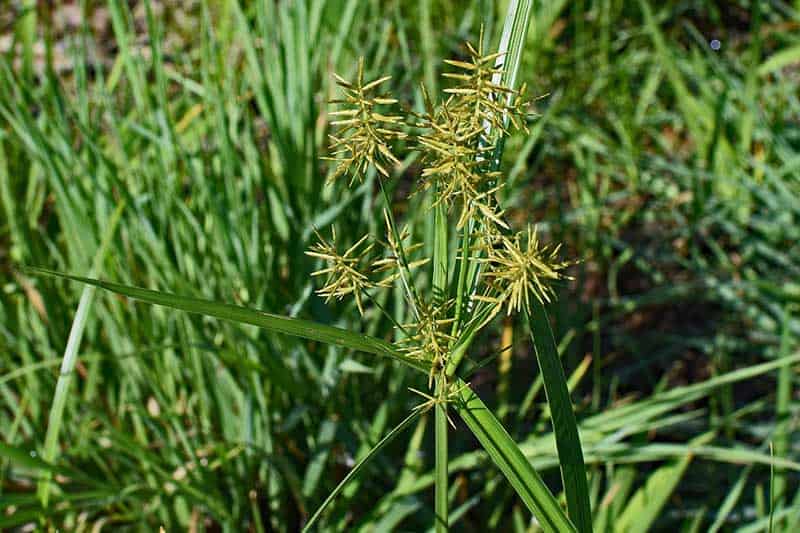
A weed that spreads easily and resembles grass, nutsedge typically shows up in late spring or early summer. They are difficult to kill and can rapidly destroy existing grass and plants by outcompeting for water and nutrients. Their extensive root systems growing up to 4-feet deep can make them difficult to remove. In Massachusetts, you commonly see purple or yellow nutsedge and require specific products that will starve these weeds to death.
8. Field bindweed
The field bindweed is a broadleaf weed that has vines that will twine around neighboring plants. It is a hardy weed that can continue to grow even in drought. You’ll want to keep cutting the vines as they continue to grow back. Eventually, the field bindweed will die after using up its energy reserves in its roots. However, keep a lookout because the seeds can be dormant in the soil for 50 years or more.
9. Garlic mustard
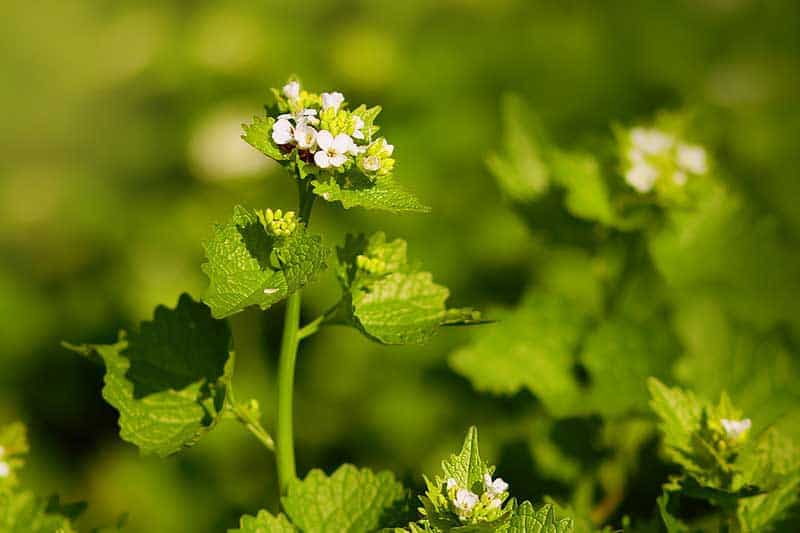
Garlic mustard can grow in almost any soil type and spread easily since each plant produces up to 5,000 seeds that remain viable in the soil for 5 or more years. Another disruptive thing about garlic mustard is its roots produce toxic chemicals that kill your grass and surrounding plants. Mowing won’t get rid of them, so make sure to pull them up by the roots.
10. Chickweed

Chickweed invasions are common in patchy lawns with poor drainage. It usually appears in the spring and grows in thick, low blankets with star-shaped, small flowers. Luckily they are easy to pluck from your lawn since they have shallow root systems. They generally thrive in moist, cool areas with some shade and soils that are rich in nitrogen. They dislike acidic soil conditions.
11. Lambsquarters
Although considered a weed that grows well and spreads in any soil condition, lambsquarters have flowers growing as short spikes and edible leaves. However, make sure to wash them well first before eating and beware that it can be poisonous to animals, such as sheep, since they contain oxalic acid. You can remove these weeds by spraying a herbicide on them.
12. Redroot pigweed
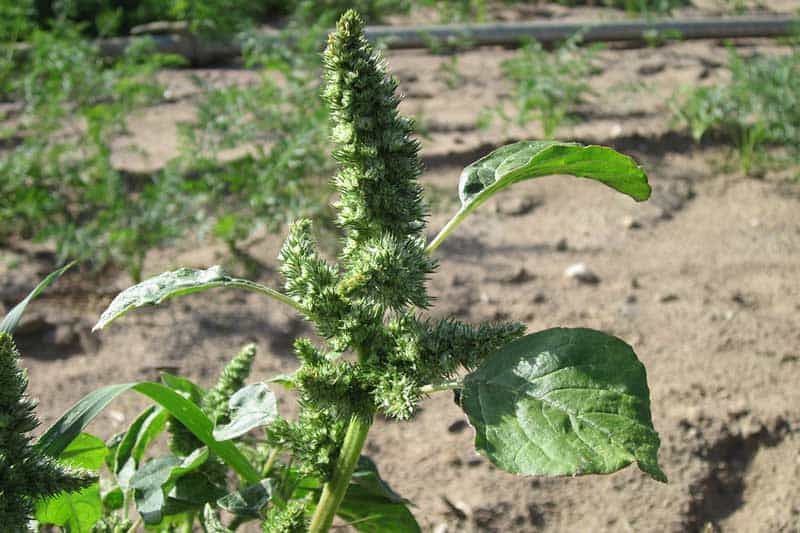
Redroot pigweed has long, lance-shaped leaves with prickly seed clusters at the end of its reddish-green stem. They can grow 3 to 8 feet tall and are characterized by their red taproot. Preventing these weeds is cheaper and easier than trying to control them once they’ve grown. You can til your soil or use herbicides with the active ingredient trifluralin.
13. Shepherd’s purse
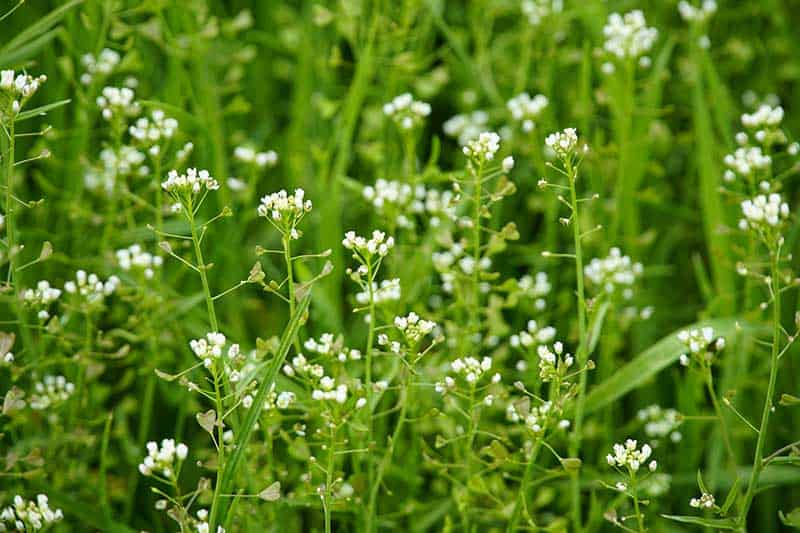
A weed in the mustard family, Shepherd’s purse has small white flowers, long stalks, and typically are seen during the spring or cooler months. This annual broadleaf weed gets its name from the triangular flat fruits that look like purses. The leaves and seedpods are edible and the weed uses its seedpods to lure and entrap small insects to digest.
14. Bull thistle
Bull thistle is an invasive broadleaf weed that has thick taproots and grows 2 to 5 feet tall. Young weeds have low, rosette-like leaves that become scratchy, rough leaves with stiff spines. They spread by their seeds that can be carried by animals, water, wind, and people. Dense infestations can prevent the growth of grass and young tree seedlings.
15. Purslane

Also called pursley or little hogweed, purslane is a competitive plant that usually shows up in the summer. They are easy to remove by hand pulling since a single plant usually covers a large area. This leafy weed can also be pulled and harvested to eat cooked or raw, including adding them to salads or chimichurri.
